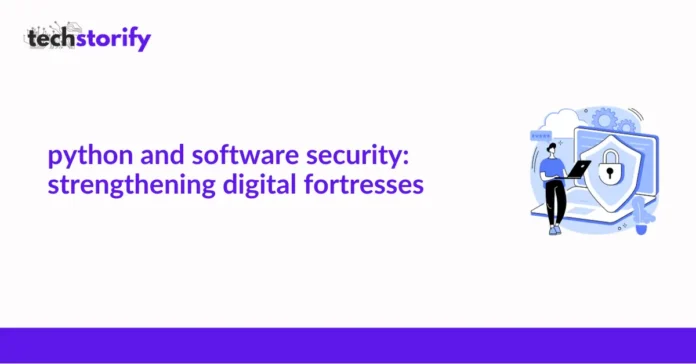In the contemporary digital landscape, safeguarding software applications against the relentless onslaught of cyber threats is imperative. Python, distinguished for its elegance and versatility, has become a cornerstone in modern software development practices.
This article delves into the intricate relationship between Python and software security, exploring the language’s inherent security attributes, prevalent vulnerabilities, and meticulous best practices.
By understanding these nuances, developers can fortify their applications, ensuring resilience against evolving cyber risks.
Contents
Python’s Security Features
Python’s prowess in security lies in its sophisticated built-in features, transforming it into a stalwart choice for security-conscious developers:
- Sandboxing Capabilities: Python offers robust sandboxing capabilities, enabling the execution of untrusted code within a confined environment. This containment mitigates the impact of malicious activities on the underlying system. To fully leverage Python’s robust security features and guarantee the creation of resilient applications, it is imperative to enlist the expertise of a proficient Python developer. Explore the capabilities of seasoned developers at https://lemon.io/hire-python-developers/ to fortify your digital endeavors and uphold the highest standards of security and quality in your projects.
- Strong Typing Paradigm: Python’s emphasis on strong typing diminishes vulnerabilities stemming from type-related issues, such as buffer overflows and format string attacks. This meticulous approach bolsters the language’s security stance.
- Automatic Memory Management: Python’s automatic memory management mitigates memory-related vulnerabilities, such as dangling pointers and memory leaks. By proficiently handling memory allocation and deallocation, Python curtails potential exploits.
Common Python Vulnerabilities
While Python provides a robust foundation, developers must remain cognizant of common vulnerabilities that could jeopardize software security:
- Injection Attacks: Python-based applications, especially web applications, are susceptible to injection attacks like SQL injection and command injection. Rigorous validation and sanitization of user inputs are imperative to prevent such breaches.
- Cross-Site Scripting (XSS): Inadequate input validation can lead to XSS attacks, enabling malefactors to inject malicious scripts into web pages. Stringent input validation mechanisms are crucial in averting XSS vulnerabilities.
- Insecure Dependencies: Outdated or vulnerable third-party libraries pose a significant risk. Regularly updating dependencies and scrutinizing for security patches is pivotal to maintaining the software’s integrity.
- Insecure File Operations: Improper handling of file operations, such as unchecked user-supplied file paths, can result in unauthorized access and data disclosure. Rigorous validation of file paths is imperative to prevent security breaches.
Best Practices for Python Software Security
Developers can bolster the security posture of Python applications by adhering to a set of rigorous best practices:
- Input Validation and Sanitization: Thorough validation and sanitization of user inputs are paramount. Utilizing parameterized queries in database operations is instrumental in thwarting SQL injection vulnerabilities.
- Secure Coding Practices: Adherence to secure coding practices, including the avoidance of hardcoded credentials and meticulous input validation, is fundamental. Employing prepared statements and data format validation further fortifies the application against common vulnerabilities.
- Regular Dependency Updates: Regular scrutiny of third-party libraries and prompt installation of security patches are indispensable. Maintaining an up-to-date software ecosystem is vital in mitigating vulnerabilities associated with obsolete packages.
- Authentication and Authorization: Implementing robust authentication mechanisms and rigorous authorization protocols is pivotal. Secure authentication libraries and frameworks enhance the application’s overall security.
- Data Encryption: Employing robust encryption algorithms safeguards sensitive data both at rest and in transit. Implementing encryption protocols like HTTPS ensures secure communication, shielding data from unauthorized access.
- Comprehensive Security Testing: Regular security assessments, encompassing code reviews, penetration testing, and vulnerability scanning, are essential. These measures aid in identifying and rectifying potential security flaws, bolstering the application’s resilience.
Conclusion
In the dynamic realm of software development, Python serves as a beacon of innovation and efficiency.
However, this innovation must be complemented by an unwavering commitment to security.
By harnessing Python’s inherent security attributes, acknowledging prevalent vulnerabilities, and meticulously adhering to best practices, developers can construct not just applications but impregnable fortresses, safeguarding users and their data in the face of persistent digital threats.
In this symbiotic alliance between technology and security, Python emerges not merely as a programming language but as a sentinel, ensuring a robust and secure digital milieu for all.














